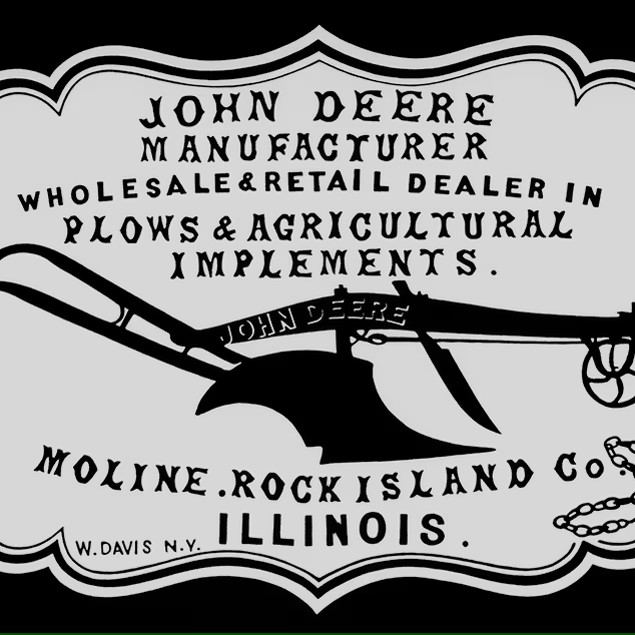Who was John Deere?
By Virginie Boone
When it comes to American farming history, there aren’t a lot of household names. But one of the more famous ones is John Deere, whose name is nearly synonymous with the modern tractor, many of which exist in Sonoma County vineyards. But who was John Deere?
Born in 1804 in Vermont to English parents who remained in the United States after the Revolutionary War, Deere lived a long life (1804-1886) and invented the first commercially successful steel plow as a young man in 1837.
Deere went to Middlebury College and soon after apprenticed as a blacksmith. After 10 years working in Vermont, where he perfected a polished steel hay fork, he moved to Illinois in search of work. It was in Grand Detour, Illinois that he figured out how to make a better plow for the local conditions, made out of polished steel instead of cast-iron. Clay soils in the Midwest were notoriously challenging for machinery, the dirt sticking to plow shares with frustrating regularity.
By the late 1840s, Deere was manufacturing 2,000 plows a year. He soon moved to Moline, Illinois because it was on the Mississippi River, a thoroughfare to transport goods. At the time he was getting steel from England, which shipped steel across the Atlantic and up the Mississippi.
When he was able to get steel from Pittsburgh he could work faster, and he began to ship plows via the Mississippi across the Midwest. By 1855 Deere was selling 10,000 plows annually and became known as the creator of “The Plow that Broke the Plains.”
By the time he incorporated as Deere & Company in 1868, he had patented several other tools, including a Hawkeye riding cultivator and sulky plow. By the time of his death in 1886, his company’s manufacturing facility encompassed nine acres and had electricity throughout, a rarity, turning out 180 types of plows as well as wagons and buggies. Soon enough, it also made bicycles.
Following in his footsteps, John’s son Charles ran the company from the age of 16, guiding Deere & Company for nearly 50 years.
In 1918 the company released the first John Deere tractor, and a legend was born. Deere’s great-grandson Charles Deere Wiman oversaw the launch of the Model A and B Tractors during the Great Depression, followed by William Hewitt, who married Wiman’s daughter and became the last family member to run the company. Hewitt introduced the four and six-cylinder tractor lines.
Innovation continues to this day. Deere & Company is a Fortune 100 company with $52 billion in net sales and revenue and 82,000 employees, a world leader in agriculture, forestry and roadbuilding equipment.
It also cares about small farms and sustainability with goals to deliver a fully-autonomous battery-powered electric ag tractor to the market in the next several years and dozens of electric and hybrid-electric product models and low/no carbon alternative power solutions.
Its sustainability efforts also include the remanufacturing of core parts and components, essentially rebuilding yesterday’s machines instead of farmers always having to buy new, an opportunity to reduce the carbon emissions that having to make a new engine or other parts emit.
In fact, Deere & Company is working with the REMADE Institute to develop cutting-edge sustainable manufacturing technologies to reduce greenhouse gas emissions as well as increasing its renewable energy use, especially with wind and solar.
It is this commitment to innovation and sustainability that brought representatives of Deere & Company to Sonoma County last week for the Farm of the Future Summit to explore ways to work more closely with local growers via the Sonoma County Winegrowers.
From a steel plow that changed farming forever in the American Midwest to tractors used on farms across the world, John Deere helped change agriculture. His legacy lives on.


